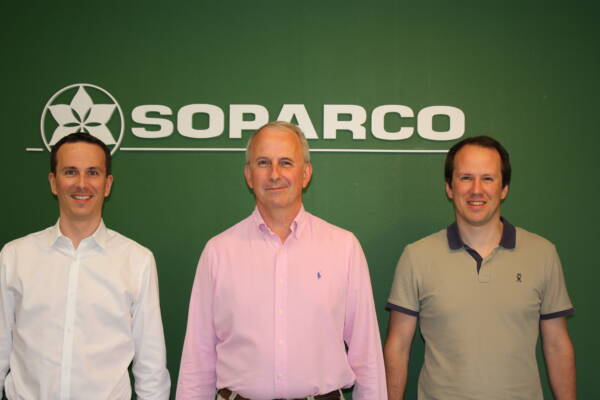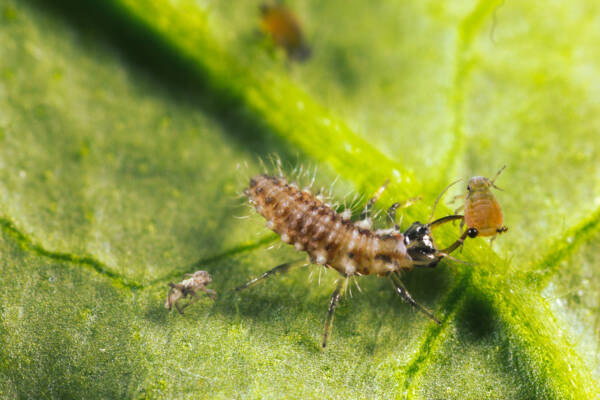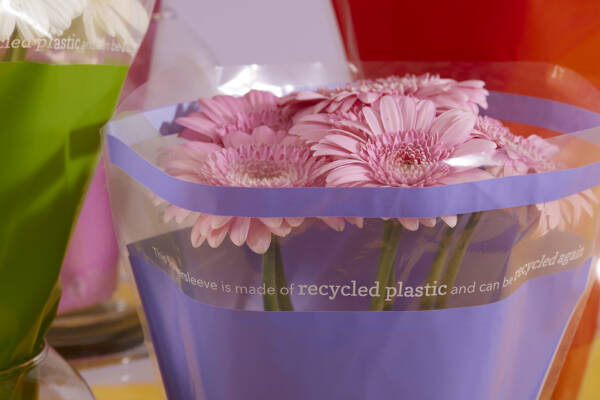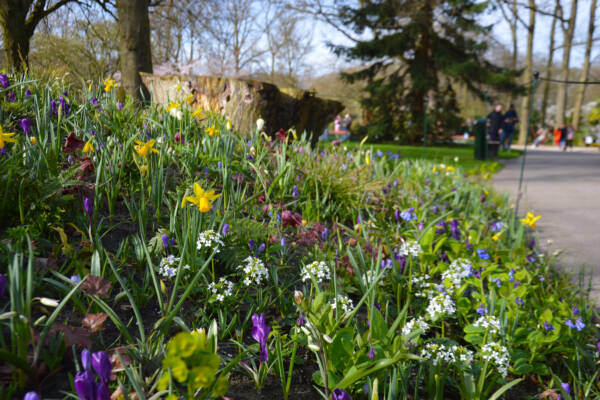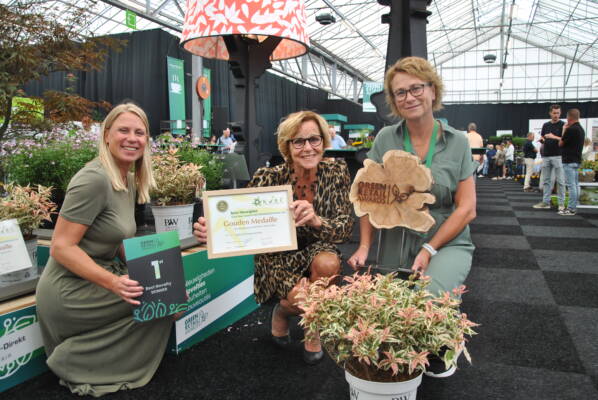In responding to the coronavirus crisis, Flower Council of Holland, the marketing arm of the Dutch floricultural sector, developed an industry-led campaign. According to the Council’s managing director, Dennis van der Lubbe Fill the Distance with Beauty is an European campaign that promotes flowers and plants as the first choice to bridge the emotional gap between people.
Led by the Council and with critical input from more than 50 internationally operating companies (representing a cross section of ornamental horticulture: production, trade, retail, marketing, sector advocacy and media) and other leading voices across the sector, the campaign’s primary goal is to encourage consumers to fill the social distance emptiness with beauty.
Launching on 7 September in the Netherlands, France and the UK, and on 21 September in Germany Fill the Distance with Beauty puts the spotlight on flower bouquets (arrangements including a mix of flowers as well as mono bouquets of one single type flower), houseplants and garden plants.
The seeds for this campaign were planted following a plea to postpone this year’s Mother’s Day until 6 September. The industry voiced its concerns when on 16 March Royal FloraHolland saw its clock turnover dropping 83 per cent while tonnes of unwanted flowers and plants ended up in the landfill. In a recent survey, Union Fleurs found that the financial impact of the coronavirus has produced a revenue loss of €4.12 billion between March and April 2020, which equals to almost 10 per cent of the annual total EU market value. Another survey by the International Association of Horticultural Producers AIPH revealed that nearly three-quarters (71 per cent) of respondents believe that most growers will soon recover after this crisis.
FCI: Mr Van der Lubbe, how would you describe today’s state of the industry?
Dennis van der Lubbe: “During the last months, we have seen an overall recovery of our sector that seems better than we ever imagined mid-March. However, the revenue loss of the beginning of this crisis has been extremely high, and the level of recovery profoundly differs not only between product groups but also between production areas. Hitting many exporting production areas hardest, and producers of smaller and seasonal products have experienced a severe decline in revenues. Overall, we do not expect the revenue losses from the beginning of the crisis to recover during the rest of the year.”
Meanwhile, there are signs of revenge spending on ornamental products now that different countries are easing their restriction measures. Garden centres report record sales; growers tell us prices for cut flowers and potted plants for this time of year have never been so high. On what grounds do you feel that the industry needs an extra sales boost?
“When recovering from an 83 per cent turnover drop to a drop of ‘only’ 10 percent, that indeed shows a steep recovery. In consumer spending, it still represents a massive number of flowers and plants that have not been selling these last months.
After the announcement of our budget cut early spring, we received the request to spend more on promotion, and not less, in times of crisis. Flowers and plants have shown being relevant to consumers to express our feelings to our loved ones, to make us feel better at home and to connect us to nature. Therefore, we need to make sure that flowers and plants are on the shopping list of the consumer.”
You broadly involved stakeholder partners in the decision-making process. How did you perceive the collaboration?
“Already for the last 2,5 years, we invite stakeholders to participate in the design process of a campaign. We explain the choices we make and ask feedback to make sure the campaign fits the needs of our sector partners. The difference this time was the presence of other sector parties than our usual stakeholders, and the level of involvement from these partners. Besides the time pressure for this campaign, the challenge has been to create a strong message for the consumer, while representing as much as possible the wishes of all stakeholders involved. We have been transparent about all the choices we have made and we are grateful for the confidence our partners have in our ability to create a strong consumer campaign.”
What do you personally like most of this new campaign?
“Combining both flowers and plants in a powerful message that shows flowers and plants are essential to reduce the emotional distance between people.”
Fifty industry professionals who each have their say…so many people so many opinions. How challenging was it to achieve consensus regarding the timing, product focus, visual format and message of the campaign?
“Regarding campaign’s message, we conducted a pre-test which clearly showed the potential of the drive across the markets. Because of that, we could stay away from subjective conversations and could focus on facts and figures. We also have been clear about the whole process, which was received very positively by all stakeholders, as shown in a survey which we conducted regarding the entire process.”
Judging from the massive protests against coronavirus restrictions around the world, there is a growing anger about social distancing measures. If marketing boils down to evoking the right set of emotions, do you think this campaign pushes the much-wanted buy button?
“Whether we want it or not, social distancing measures are part of reality. This campaign turns the negative emotion associated with the distance we are forced to keep to positive emotion: the distance, both physical and emotional, is a void that needs filling with something beautiful. This positive approach, and the natural role our products have, shown over the last few months to reinforce relationships, provides the right mindset to push the buy button.”
By focusing on the social distancing message, how much of the campaign’s feel-good factor is at risk?
“The last thing we want to do is pointing our finger as a police officer asking people to follow the rules. This campaign is not about telling people to keep the physical distance; it shows them how flowers and plants make us feel better despite the social distancing measures. By surrounding ourselves with the beauty of these products, and increasing our well-being and that of our loved ones by sending or giving them flowers and plants.”
Covid-19, in essence, is a health crisis. Why not focusing on the beneficial health effects of flowers and plants?
“Deliberately, we have chosen not to directly include any beneficial effect of flowers and plants in the campaign. We must be careful not to create any suggestion that flowers or plants are a cure for Covid-19.”
In April, your budget was cut by more than 50 per cent to weather the coronavirus pandemic. Now nearly four months on, you have seen an uptick in your budget with the governing board approving an adjustment to the budget after sales at Royal FloraHolland picked up quicker than expected. (this year you have 14 million at your disposal, still two million less than last year) What portion of your budget allocates to this new campaign?
“With the extra budget available, we can allocate enough budget to this campaign to make it as impactful as our regular campaigns.”
Of the campaign’s total budget, what portion of the money is paid by third-party funding?
“Our partners contribute both through direct financial support and by providing support in production and investing in creating reach via their communication channels. As the Flower Council, we invest the most significant share, also because our budget is picking up again.”
Meanwhile, Brussels announces that there is additional money available for marketing promotion campaigns. Did you tap into the Brussels funds?
“Over the last few months, we have been in close contact about this funding possibility, hoping to increase the budget for Fill the Distance with Beauty. This additional promotional fund from Brussels is to be spent on campaigns restoring the European market in 2021, and not in 2020. The September date was previously set for this current campaign. We applied for funding, together with other international promotional institutions, for a new campaign in 2021 which is on top of our planned campaigns. We will keep doing what we do best: inspiring European consumers to buy more flowers and plants, also in 2021.”






































